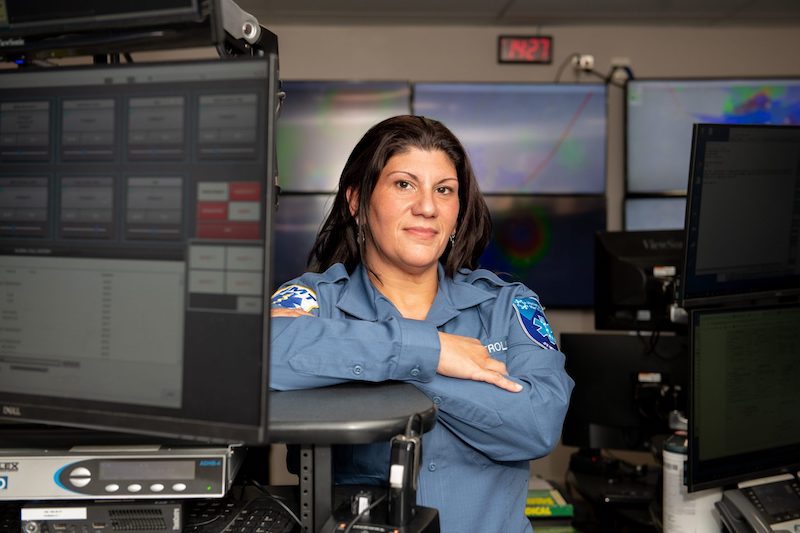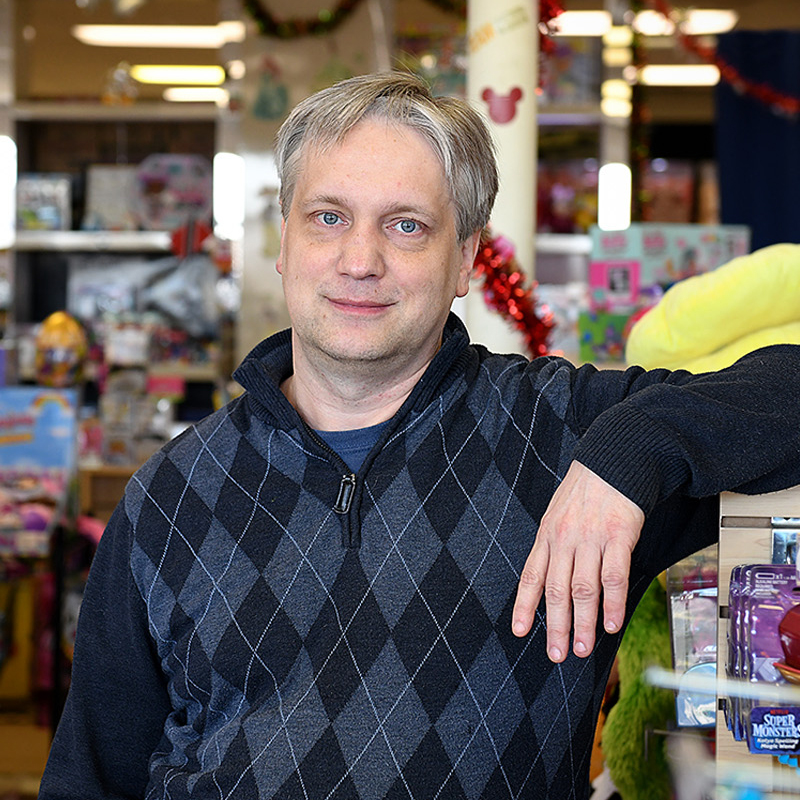Emergency Care: Trust in Technology

June 29, 2020
Not much could be more stressful than waiting for an ambulance, not knowing if emergency workers are going to get to you or a loved one in time. But with better-than-ever technology, JFK Medical Center is helping take that worry off the table.
The idea is not exactly new. System status management—the fluid deployment of ambulances based on time of day and day of the week in order to meet demand—has been around for decades. But today, the latest technology is ensuring a rapid-fire response to any emergency.
How it works: JFK’s Command Center is equipped with floor-to-ceiling heat maps that update every 30 seconds. Imagine a weather map that tracks the rain, snow or sun. Only here, these massive monitors follow where people move throughout the area and, using computer technology, displays where calls for help—for everything from strokes to heart attacks to car accidents—have come in over the past few weeks.

“Before a call to 911 even comes in, we’re analyzing the maps to make sure that ambulances are repositioned in areas where the next call is likely to happen,” says Mark Bober, director of EMS at JFK. “We also make sure that we have the right amount of staff on shift at any given time: more during busy times, less when things are usually quiet,” he says. “So there will be enough ambulances in the right places to get to you in time.”
Ambulances and staff are constantly tagged in and out, as well as shifted around depending on need. “It’s a real-time chessboard we're working with,” Mark says.
This saves a great deal of time, as JFK is located in one of the most heavily trafficked areas in New Jersey. “For the entire greater Edison area, our monthly basic life support response times are regularly less than seven minutes,” he says. “With national averages much higher, we take great pride in the total team effort it takes to consistently deliver these results.”
From the providers responding on the front lines every day to those in the Command Center interpreting the data and making subtle changes, everyone plays a role in this success and the team is unified in the desire to provide outstanding care to the communities.

Overcoming the Obstacles
It’s incredibly difficult to provide ambulance service to many parts of New Jersey because of all the divided and major highways, Mark says. Being on the right side of those highways before a call comes in greatly reduces response time. “For an extremely congested area, it is exceptionally important not only to have the right number of ambulances available, but also have those ambulances in the right places,” he adds.
In addition to getting to the emergency quicker, there’s another added benefit to placing ambulances closer to where they need to be: It reduces the risk to the EMS team and the public.
About 4,500 ambulance crashes occur every year in this country, according to the National Highway Traffic Safety Administration. In the majority of fatal crashes involving an ambulance, the driver or passenger of another vehicle is the one who’s killed. Wake-effect accidents are common, as well: Cars often see an ambulance at the last minute. They slam on their brakes at an intersection, which can often lead to another accident.
“Not only is it better for us to be closer to the person calling 911 for the person him or herself, it’s also better for the community as a whole,” Mark says.
Help on the Other Side
Getting to the hospital isn’t the only place where technology is helping patients. JFK also partnered with Lyft to arrange patient rides home.
With new data analytic tools and integrated software systems, the Command Center is able to predict the demand for rides and arrange Lyft vehicles accordingly. Patients can connect with the EMS communications team to arrange discharge transport and get home quicker. Each campus is digitally mapped with designated pick-up and drop-off locations to help drivers and patients find each other. And the Command Center is able monitor the progress of rides in real time.
“Being able to pair state-of-the-art predictive modeling and vehicle positioning technology with the experience of our communications personnel results in a highly efficient communications center capable of providing swift and reliable care to a large number of communities,” Mark says. “All of this is geared toward one goal: making sure our patients get the right care at the right time for their emergency needs.”
Next Steps & Resources
- Learn more about how we are taking emergency care to the next level across the state
- Don’t resist going to the emergency room: Here’s why
- To find a provider near you, visit HackensackMeridianHealth.org or call 800-822-8905
Source:
The material provided through HealthU is intended to be used as general information only and should not replace the advice of your physician. Always consult your physician for individual care.
Find a doctor near me
Mother and Grandmother from Clifford, New Jersey, Reacts Quickly to Signs of Stroke
Clifford, NJ woman's quick stroke response led to successful treatment at Bayshore Medical Center. Learn vital stroke signs & get help fast.
New Jersey Woman Stopped the Bleed and Saved a Life
NJ woman's life saved by Stop the Bleed training. Learn vital first aid skills; save a life. Call 551-996-2609 or email trauma@hmhn.org.
Find a doctor near me

What It Was Like to Take My Son to the ER During the Pandemic - Christine
ER Visit During Pandemic: Mom shares experience at Joseph M. Sanzari Children’s Hospital. Learn how they handled her son's illness & find care. Call 800-822-8905.

Breathing Easy After Vaping Lung Injury
Recover from vaping lung injury. Caitlin Hayes' story of recovery at Bayshore Medical Center offers hope. Learn more.

On a Roll After Shoulder Surgery
Shoulder surgery recovery story. Dr. Perez shares his experience with Dr. Mehta at Palisades Medical Center. Learn how he returned to cycling. Schedule an appointment today.

Back in Business After Emergency Care
Back in Business After Emergency Care. Raritan Bay Medical Center provided excellent care for Mark Nagrocki. Learn his story and find a doctor.
